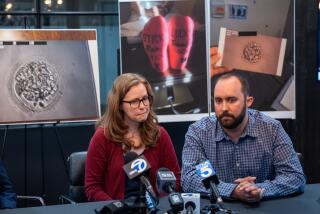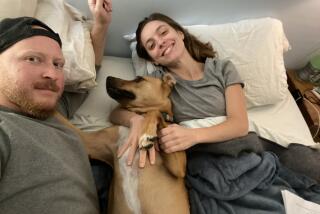UCI Doctor’s Catheter Procedure Yields Baby
- Share via
The phone of UC Irvine obstetrician Ricardo Asch rang constantly Thursday as reporters around the country wanted to interview the doctor on a new, still experimental fertilization procedure that had yielded its first baby in the United States.
“I think it’s important but not that important,” Asch said modestly. “We are still perfecting this.”
Slightly more than 9 months ago, Asch and associate Jose Balmaceda used a thin catheter to place several embryos inside an Irvine woman’s fallopian tubes.
On April 9, she delivered a healthy 7-pound baby girl--the first baby in the United States conceived from placing fertilized eggs in a woman’s fallopian tubes without surgery. Previously, placing the fertilized eggs required surgery and general anesthesia. The new technique eliminates the risks of surgery, can be performed outside a hospital and cuts the cost of fertilization in half, from about $7,000 to $3,500, Asch said.
Asch said doctors in France and Australia have also performed the procedure without surgery. Also, a Fairfax, Va., doctor announced Wednesday that the technique had resulted in the birth April 12 of a healthy 4-pound, 15-ounce baby girl.
But Asch cautioned that while the technique is “promising,” this is only the beginning. He said he needs several more years of “practicing” and testing catheters before it becomes routine.
Even then, he cautioned, “it is not for everybody.” He said he is reserving the procedure for couples whose problem is male infertility--low sperm count and low motility--or in cases of immunological infertility, in which the woman produces antibodies to the sperm.
The procedure is a variant of something Asch and Balmaceda pioneered 2 1/2 years ago called zygote intrafallopian transfer or ZIFT (a zygote is a fertilized egg).
To begin the process, Asch uses fertility drugs to stimulate the woman to produce many eggs. Guided by ultrasound, he inserts a thin needle through the abdomen to aspirate the eggs and then fertilizes them in a laboratory. About 40 hours later, he puts four embryos in a pliant, narrow catheter, inserts the catheter through the vagina and uterus to the fallopian tubes and places two embryos in each tube.
Asch said he has done the nonsurgical and “painless” procedure two other times but the women did not become pregnant. Actually, Asch said, he only learned that a baby had been born from ZIFT when an Associated Press reporter called Wednesday, asking for comment on the Virginia doctor’s claim that his clinic had the first nonsurgical “ZIFT baby.”
When Asch asked a nurse to call his patient, he learned that the Irvine baby had been born 3 days before the one in Virginia.
Asch said he was pleased by news of the birth but still amazed that television stations, radio newsmen and newspaper reporters wanted to talk to him about it.
“We do have a baby, but this is still at a very experimental stage. We are still practicing now to reach the fallopian tube without damaging the uterus,” Asch said.
Meanwhile the Irvine woman with the “ZIFT baby” has told Asch’s nurse that she prefers to remain anonymous.






